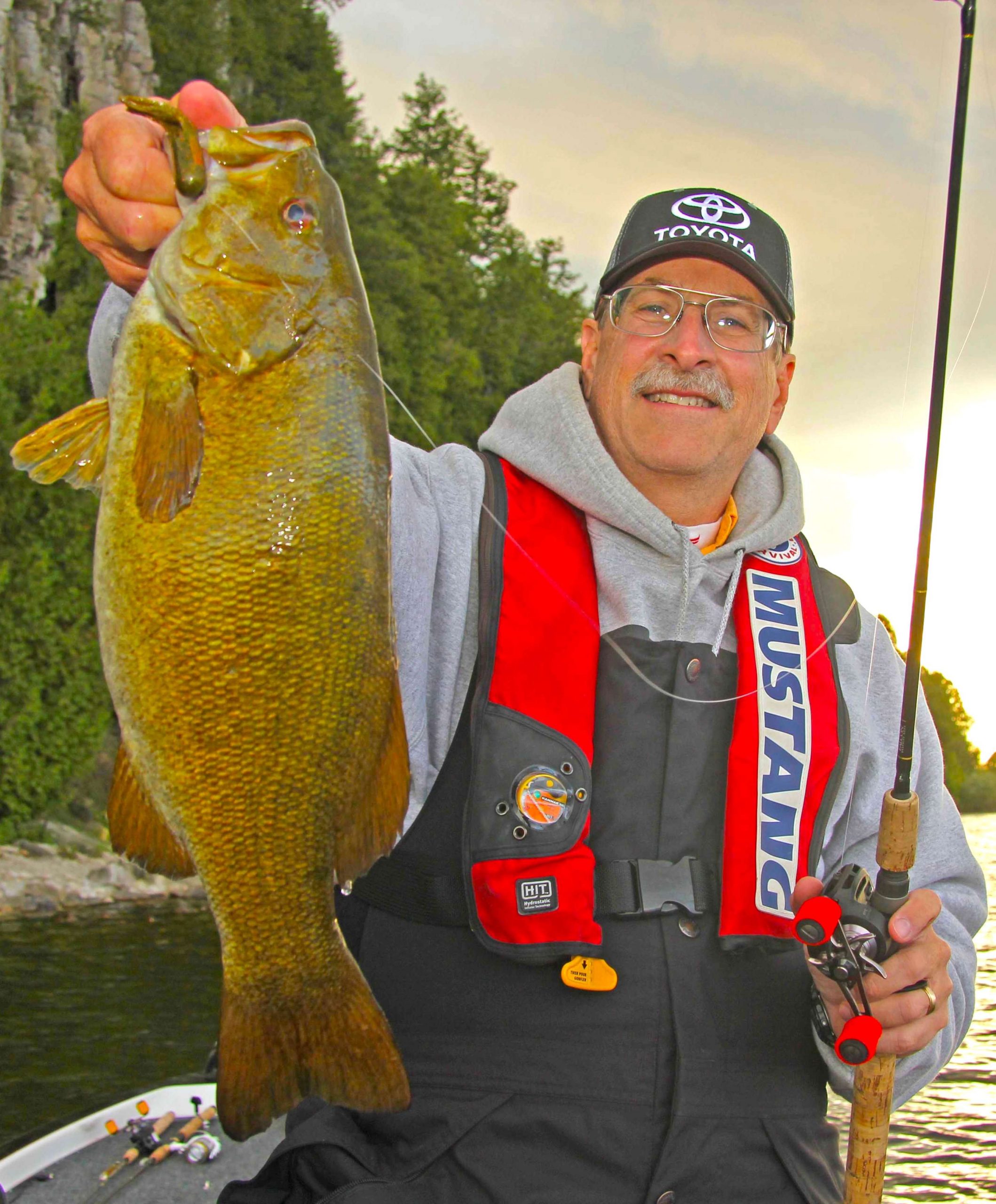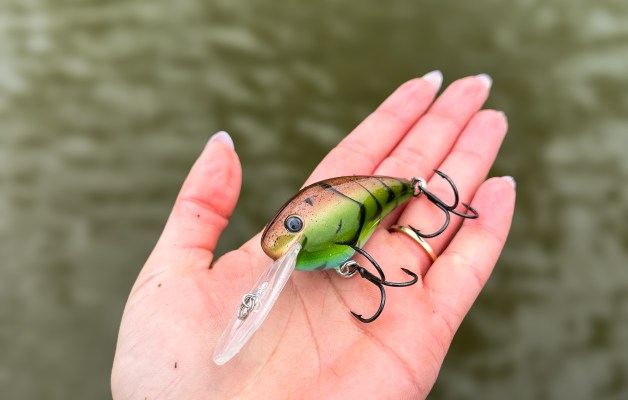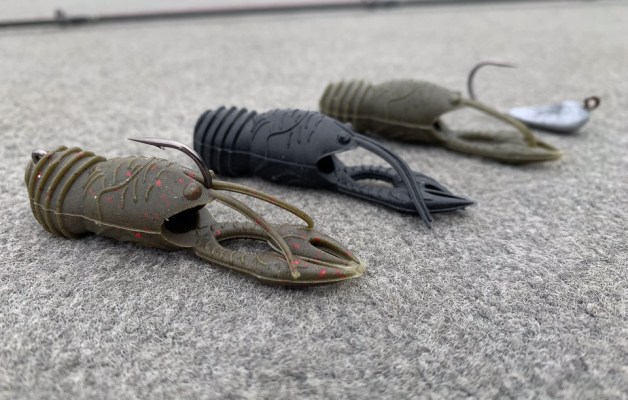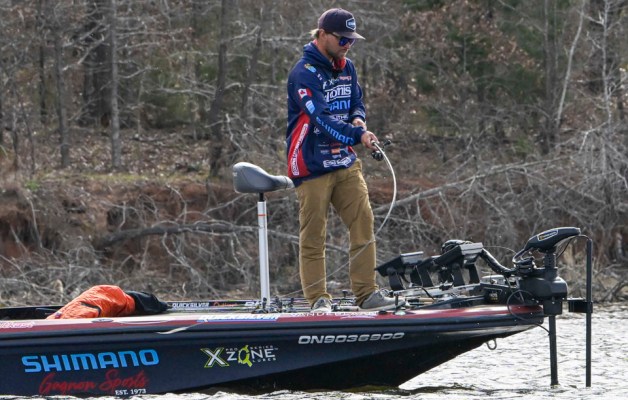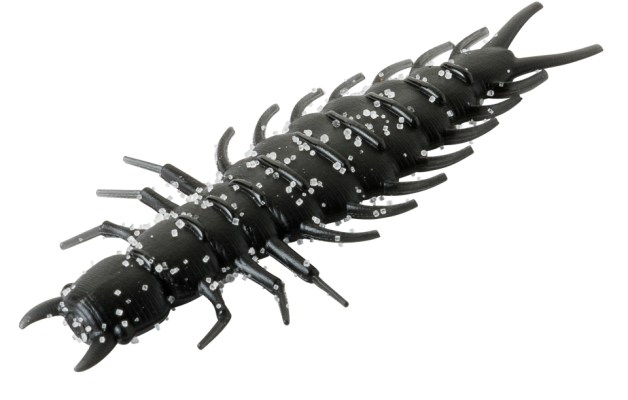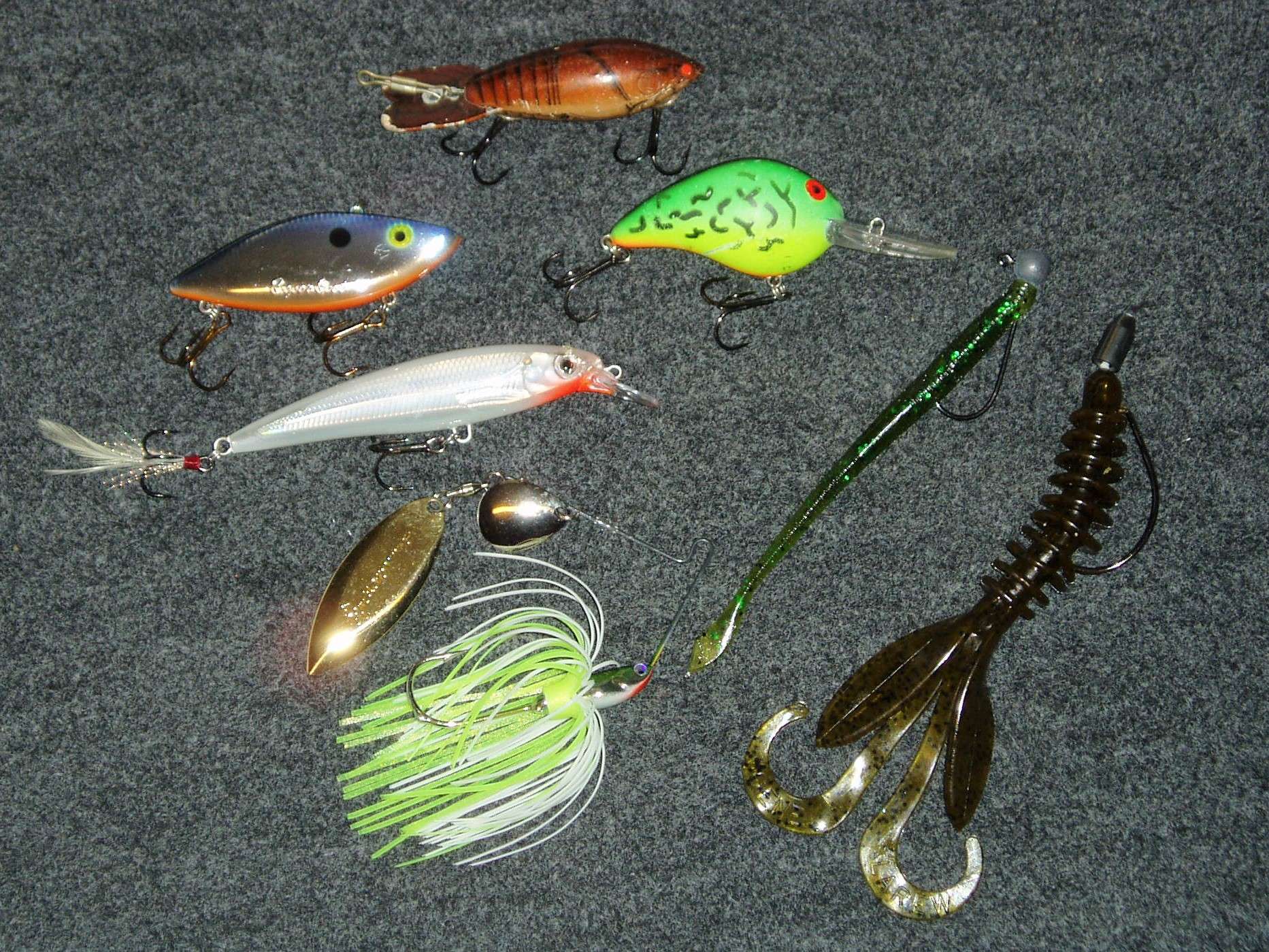
Many years ago, I toured the Bomber Bait Company factory. The president of the company showed me a new bait they were going to call the Model-A. He said they would make it in 100 colors…“10 to catch fish, 90 to catch fishermen!” Visit your local tackle shop and witness the array of lures available today and you can believe what he told me was true.
So how much of this color thing is the real deal? Can bass distinguish between a watermelon lizard with black specks and one with red specks? Yes. Does a jerkbait with an orange belly sometimes catch more fish than one with a white belly? Sure it can.
I’m not bashing the industry for selling you zillions of colors. If you think a certain color will catch more fish, you will fish it longer, more deliberately and pay more attention. There is confidence at work.
But is there a scientific basis for all those colors?
Bass have rods and cones in their eyes for black and white as well as color vision. Frank Brown researched vision in largemouth bass in 1937. He published his results in the Illinois Natural History Survey Bulletin as “Responses of Large-mouth Black Bass to Colors.” In the late 1980s, the late Dr. Loren Hill, professor from the University of Oklahoma, conducted research into bass vision that led to the invention of his Color-C-Lector.
Brown found and Hill confirmed that bass can see a range of at least 28 colors from reds to violets. In addition to the traditional color spectrum, Hill studied fluorescent colors and found bass equally discriminatory. Bass tended to show a preference towards fluorescent blue, green, chartreuse and orange. Under varying light intensity and water clarity, bass consistently responded more strongly to fluorescent colors than non-fluorescent colors.
Researchers at Oklahoma State University looked at how well bass discriminate between different colored fishing line and found fluorescent yellow was the most easily recognized, followed by green, then fluorescent white then clear. Red fishing lines become popular for a while on the theory that long wavelength red light is absorbed most quickly in water so red lines should virtually disappear below the surface. But don’t jump into that pond just yet.
Both color and intensity appear to play a part in a bass’ response to color. This means, for example, that a bass’ response to a blue lure would be different than the response to a lure the same shade but faded or washed out. You’ve probably heard of anglers catching more bass on baits that had faded out from being left on the dashboard of their pickups. Same colors, just less intense.
Hill found that bass seemed to have greater sensitivity to reds and yellows. This supports Brown’s description of bass color vision as being similar to what a human sees if they were looking through yellow tinted glasses.
But don’t confuse sensitivity with preference. Being able to discern a color does not automatically create a positive reaction. Quite the contrary. Hill found that bass had a positive reaction to greens but negative reactions to yellows and reds. Now what color line do you pick?
Light intensity and color can be affected by two factors: light penetration and water clarity (turbidity). Light penetration varies during the course of the day, with weather conditions and from season to season. When sunlight strikes the surface of the water at a flat angle such as dawn or dusk or in the winter, most of the light glances off, reflected back into the sky.
Turbidity can vary from clear to so muddy a white spinnerbait disappears the instant it submerges. Hill was able to determine that in clear water with 25-45% light transmittance that blue, purple, yellow and silver were most visible. In stained water gold, brown and orange were more visible to test fish.
Here’s where physics comes in. Long wavelength red-orange light is absorbed first, blues to violet (short wavelength) light is absorbed last, i.e.: penetrates deepest so these retain their color at greater depth. Fluorescent colors also maintain their visibility deeper. But except in the clearest of waters, colors eventually fade to grey then black.
Another factor that influences lure visibility is contrast between dark and light shades. Fire tiger is the ultimate example of this. Bright, highly visible fluorescent chartreuse, greens and oranges with black squiggly markings create sharply contrasting patterns.
Research done by Pure Fishing showed that in clear water a counter-shaded lure (dark back with a light belly) was much more likely to entice a strike than were solid colored baits. Perhaps bass have an innate recognition of “natural” shading patterns or perhaps contrast aids visibility. As water clarity increases, natural colors and appearance seem to play a larger role in triggering reactions.
Distance to target is also a key. Research done in Kansas found that sunfish have greater visual acuity than bass. Evolution has provided this gift to prevent the extermination of the species by predators. Bluegill make a living picking off almost tiny zooplankton, and in clear, sunlit conditions they can recognize bass at a greater distance than bass can recognize their prey. However, as light intensity falls at dawn or dusk or in turbid conditions, the predator gains the upper hand.
Some predators also detect polarized light. Light waves strike tiny particles of sediment or plankton in the water, scattering the light in random fashion, but light bouncing off an object, a prey fish for example, has a more uniform pattern. This pattern is readily distinguishable from the background “noise.”
Research suggests that predatory fish see polarized images two to three times further than with ordinary vision. Do the holographic finishes and realistic textured scale patterns on some baits reflect a polarized light that is detectable by bass? I don’t know, but that may explain why these baits seem to be more effective at times than baits with smooth finishes.
So how can you put this world of color to work to help you catch more fish? Well, you can always go out and buy one of every color lure or worm on the market so you’ll always have the right one. Or you can do what more and more of the pros do.
Limit your choice to a few basics and learn to use the bait the right way in the right place at the right time. We call this the Four Basic Food Groups for Bass. In crankbaits these are: shad (whites, Tennessee shad), crayfish (browns and reds), sunfish (fire tiger or perch) and minnows (chrome and silver). Choose a relatively small selection of lures to cover most conditions — shallow, medium, deep.
In spinnerbaits, our pros recommend the old standby chartreuse and white as the universal color. High visibility under a wide variety of conditions. Match blade size to the forage. Colorado blades in cooler and stained water, willow leaf when it’s clear and warm. Gold blades in stained water, nickel in clear.
In soft plastics, it’s even easier — choose a light and a dark color. Watermelon is the favorite of the pros when faced with clear water conditions. For stained or muddy water they go to green pumpkin, black and blue, or junebug.
But our pros agreed that knowing the water, learning where fish will be during certain times of the year or under certain conditions, is far more important than the color lure you try to feed them once you figure out where they live. Don’t make it more complicated that it needs to be. Start with the four basic food groups. Learn to present those baits properly and at the right depth and you will catch fish.

